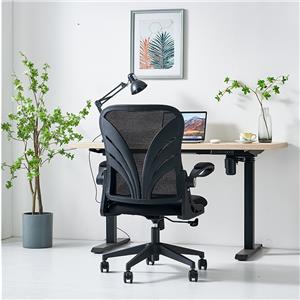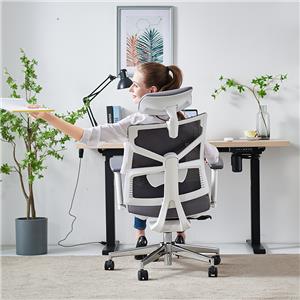The impact of ergonomics on product design
The fundamental purpose of product design is to make people live better, and to achieve this, designers need to design and manufacture products from the perspective of putting people first and products serving human beings. Designers need to consider two levels of content, one is the safety, comfort, and ease of operation of the product; the other is the aesthetics of the product and its harmony with the surrounding environment. Modern people's requirements for products are not limited to usability. People also have further requirements for comfort. So how to take into account both practicality and comfort has become an important issue in product design in the new era.
Ergonomics is composed of many different sub-disciplines, and its purpose is to study the interaction between people, machines and the environment, so as to maximize people's work efficiency. With the gradual improvement of human material and spiritual civilization, people have put forward higher pursuits for work efficiency and environment. A more comfortable environment, more efficient work, and easier operation have become new requirements for the products people buy today. This article explains the impact of ergonomics on product design through the development of ergonomics and related applications of ergonomics.
1. Development of ergonomics Ergonomics originated in European and American countries after World War II. European and American countries have developed industries. Under the industrial-dominated social system, European and American countries began to mass-produce and use mechanical equipment to explore the relationship between man and machine. The coordination between them gradually gave birth to the prototype of ergonomics. As an independent discipline, ergonomics has a history of nearly 50 years. This is an emerging discipline that includes engineering, environmental studies, technology, industrial design and many other disciplines. During the Second World War, the military science and technology of various countries improved rapidly, with European and American countries improving the fastest. At the same time, European and American countries began to use early ergonomics principles to manufacture the inner cabins of tanks and aircraft. It enables combatants to effectively perform combat operations in the cabin while minimizing the fatigue of combatants operating in a small space for a long time. After the end of World War II, various countries applied the practical results of ergonomics to industry, construction, and daily necessities. Today's society attaches great importance to people-oriented and serving people. When modern people buy goods, they are no longer limited to price, but pay more attention to the user's operating experience.
2. The application of ergonomics in product design People are the core of product design. Product design serves people, and ergonomics is also people-oriented. The fundamental purpose of product design is to make people live better, and to achieve this, designers need to design and manufacture products from the perspective of putting people first and products serving human beings. Designers need to consider two levels of content, one is the safety, comfort, and ease of operation of the product; the other is the aesthetics of the product and its harmony with the surrounding environment. Modern people's requirements for products are not limited to usability. People also have further requirements for comfort. So how to take into account both practicality and comfort has become an important issue in product design in the new era. For example, the design of a bed requires designers to take into account the gravity direction of the sleeper's upper body and at the same time grasp the strength of the support surface. Because if the support surface is too strong, it will cause muscle soreness and make it difficult to fall asleep; if the support surface is too soft, it will cause the sleeper's spine to become W-shaped, causing damage to the sleeper's body. The bed screen is the main design content of the bed. The design of the bed screen should also use ergonomics. The bed screen itself is for sleepers to rest against. It is necessary to consider whether the bed screen itself is comfortable for the sleeper to support, which involves the head. , neck, shoulder, back comfort, and the size of the activity space.
Seats are particularly common in daily life, so applying ergonomics to chair design has great potential. The ergonomic design of the seat mainly considers the following aspects: First, the seat height. If the seat is too high, the user's legs will be suspended, which will cause the thigh muscles to be compressed, resulting in soreness, and even The user's back may also experience fatigue. However, if the seat is too low, the user's cervical spine will be in a suspended state, which will not ensure the normal posture of the lumbosacral vertebrae, increase the burden on the body, and easily cause fatigue. The second is the depth of the seat. The seat should fully support the user's buttocks. There needs to be a certain distance between the front end of the seat and the calf to ensure that the calf can move freely. The design of the backrest is also very important, because when the user sits, he sits upright with his feet on the ground. If the torso is not effectively supported, the back muscles will be tight and prone to fatigue. The angle between the backrest and the seat should be slightly larger, which is beneficial to blood circulation in the abdomen and legs. These are all factors to consider when designing your product.
3. The impact of ergonomics on product design. Samples designed without taking ergonomics into consideration often only focus on the use function, but forget whether the user can use it comfortably. Take the mouse as an example. There were few previous mouse styles and the shapes were basically the same. The mouse lay on the desktop, and the left and right mouse buttons were parallel to the desktop. When operating this mouse, the back of the wrist and hand were at a fixed angle, and the contact surface muscles between the side of the palm and the desktop The backlog increases the pressure on the blood vessels of the wrist, and the hand cannot fully fit the surface of the mouse. The joints will feel suspended, and the wrist will be dorsiflexed at a certain angle. This makes some muscles of the wrist in a forced position and cannot move naturally. Long-term use will cause Causes "carpal tunnel syndrome", also known as "mouse hand". After applying ergonomics to mouse design, the designed mouse effectively solves this problem. The design of the ergonomic mouse makes the mouse vertical to the desktop, reducing the impact on the wrist joints and wrist joints when holding the mouse with the palm downward for a long time. Stress and pain caused by muscles. When the mouse is in a vertical position, the user must place the palm of the hand in a natural vertical position. This mouse-holding posture avoids the flipping of the arm, thereby relieving the pressure on the wrist. The traditional mouse holding posture makes the user's wrist basically in contact with the desktop, which causes most of the gravity of the entire hand to fall on the wrist, which is also a major cause of "mouse hand". Not only that, this posture of holding the mouse also limits the movement range of the mouse. The mouse is in the movement range centered on the wrist. The ergonomic mouse completely gets rid of this constraint. It frees the mouse from the support of the wrist. While freeing the user's wrist, it also expands the movement range of the mouse, which is of great help to operators who need to draw and draw. Through the comparison between traditional mice and ergonomic mice, the application of ergonomics in product design has become another important factor that product designers in the new era need to consider.
4. People are the core of product design. Product design serves people, and ergonomics is also people-oriented. With the continuous improvement of modern people's living standards, modern people's requirements for purchasing products have also gradually increased. This requires product designers to not only consider the innovation, aesthetics, and practicality of the product, but also consider the user's behavior, health and other factors during the use of the product. Therefore, applying ergonomics to product design has become an inevitable trend in future product design.




